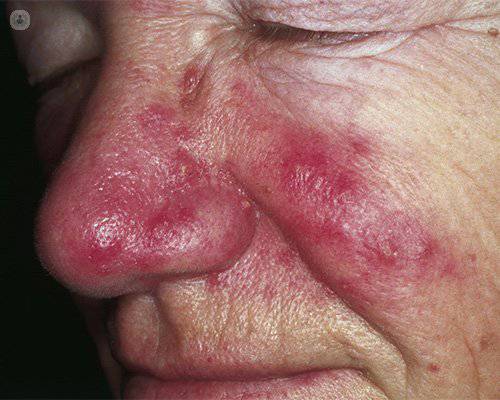
Rosacea laser treatment: before and after
Rosacea is a form of chronic dermatosis that affects 10% of the population. Fair skinned women are more prone to it. It is not a serious illness but it is an aesthetic issue which can cause stress in some women.

Causes of rosacea
The causes of rosacea are unclear but various triggers have been demonstrated such as extreme temperature changes, excessive intake of spicy foods, chocolate or soy sauce, alcohol consumption, situations of greater emotional stress, and physical exercise, etc.
Symptoms of rosacea
Rosacea mainly affects the face, namely, central areas of the face, cheeks, chin and nose. It can also occur on the ears, neck, torso and scalp but this is less common.
Laser treatment of rosacea
Currently none of the available treatments (topical, systemic and laser) are considered curative. The aim of the therapy will be to reduce the symptoms, lengthen the periods between recurrences, and improve the aesthetic aspect.
Laser treatment is especially useful in the treatment of erythematotelangiectatic rosacea, as it effectively improves the vascular component of rosacea, reducing the erythema, telangiectasias, and the incidence of new rosacea outbreaks.
The most suitable laser for treating rosacea is the pulsed dye laser (PDL). Less selective lasers such as the 532nm KTP laser, the Nd:YAG 1.064nm laser and the intense pulsed light are vascular lasers that can be used. In cases of phymatous rosacea, a CO2 laser can be used, where the light is absorbed by the water and allows precision destruction of the excess tissue.

